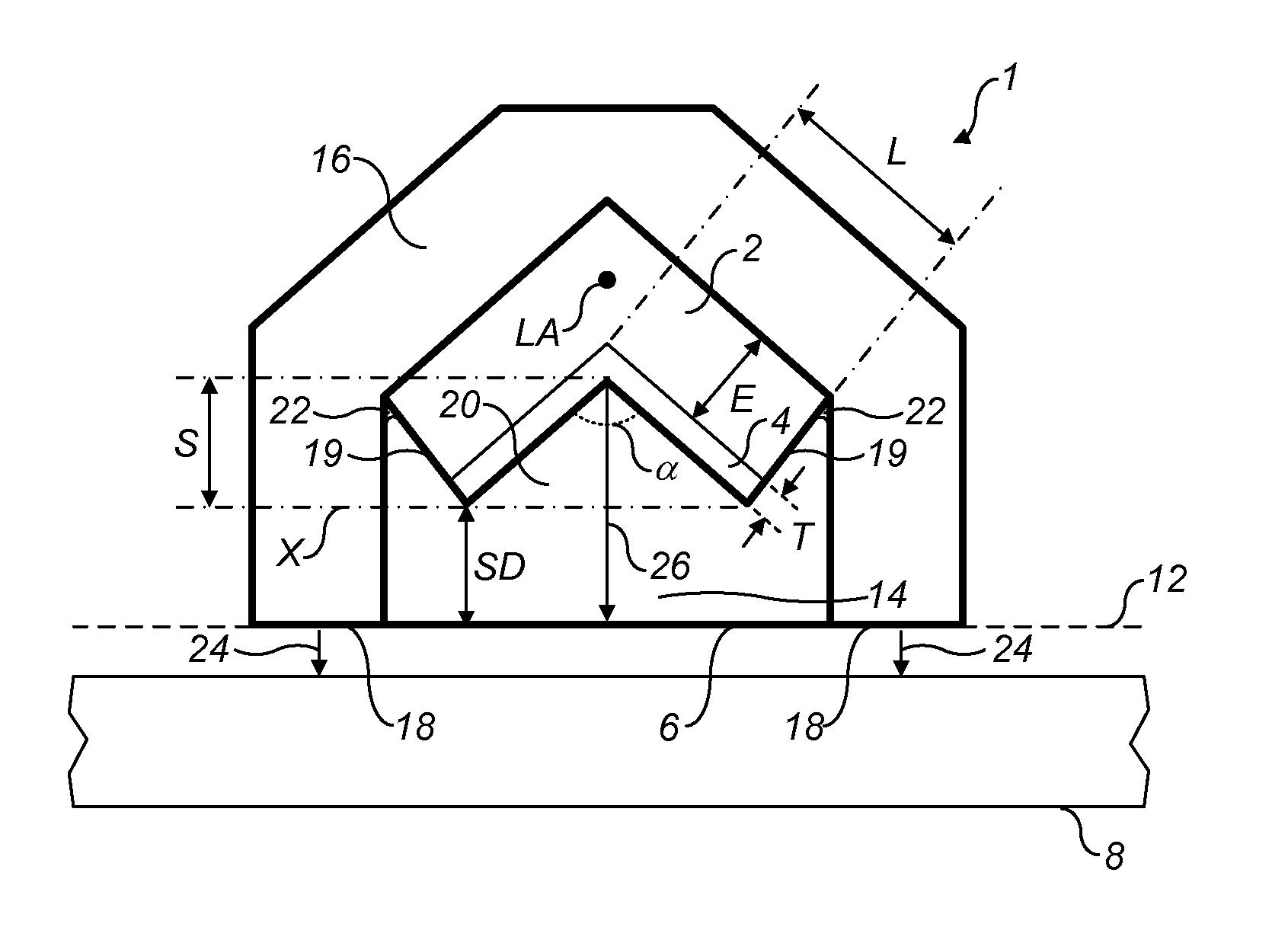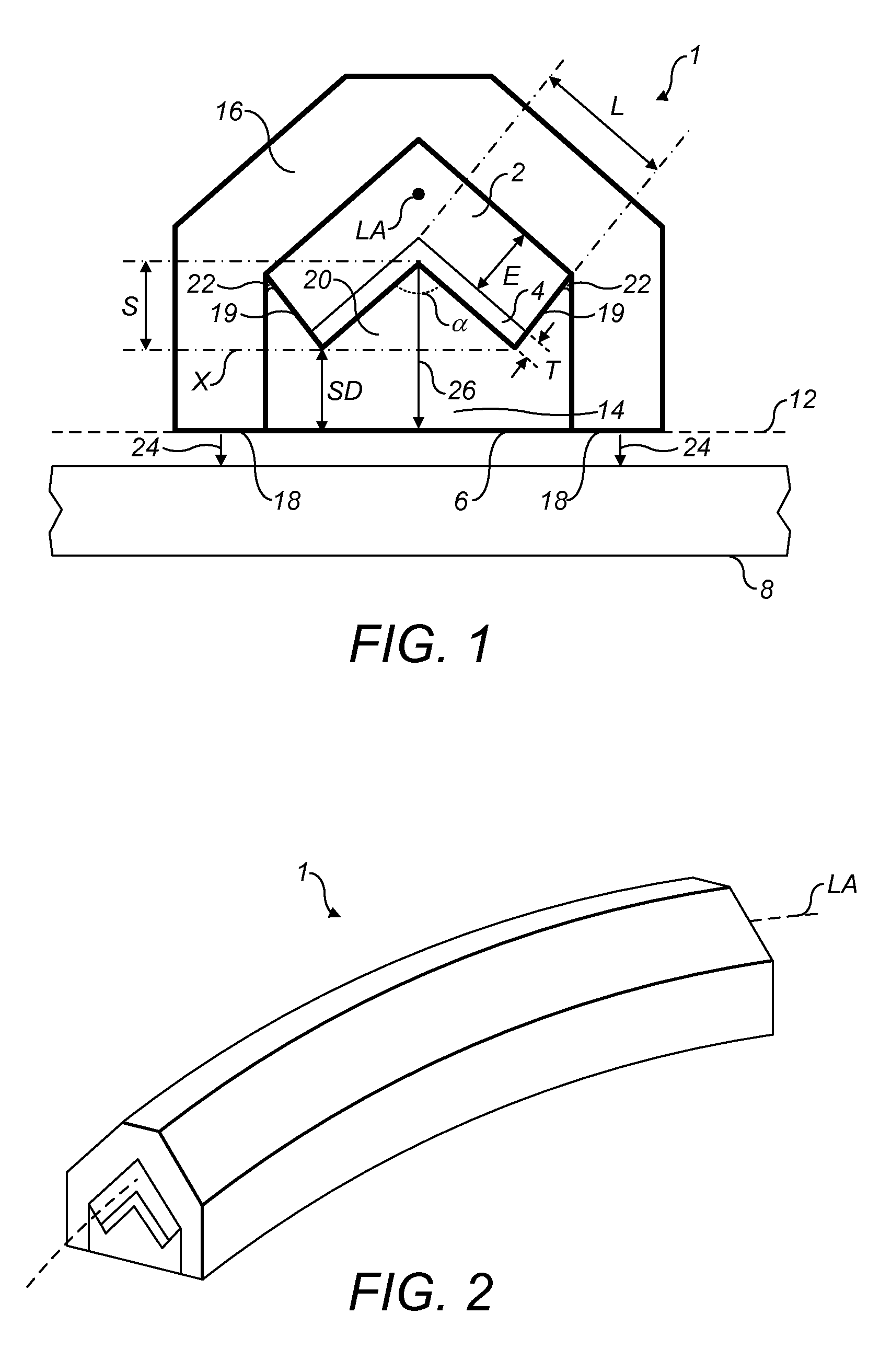Linear shaped charge
a linear charge and charge technology, applied in the field of linear charge, can solve the problems of increased cutting width, spall fracture, reduced penetration depth of target wounds, etc., and achieve the effect of effective cutting jet, excellent cutting efficiency, and improved jet quality
- Summary
- Abstract
- Description
- Claims
- Application Information
AI Technical Summary
Benefits of technology
Problems solved by technology
Method used
Image
Examples
Embodiment Construction
[0024]FIG. 1 shows schematically a cross section of a linear shaped charge 1 according to an embodiment of the present invention. FIG. 2 shows schematically a perspective view of the linear shaped charge 1 of this embodiment.
[0025]Referring to FIG. 1, the linear shaped charge comprises an explosive element 2, a liner 4, and a face 6 for application to a target object 8. The explosive element and the liner have a V-shaped cross section, taken in a plane perpendicular a longitudinal axis LA of the charge 1, as illustrated in FIG. 1. The term V-shape includes forms where the two sides of the V, either side of the apex, are equal, or unequal, in length; the sides may be equal. The liner lies in a groove of the V shaped cross section of the explosive element. The explosive element and the liner are formed of materials which adhere to each other upon contact, without requiring a separate adhesive. The face 6 is planar, defining a target plane 12. There is a space 14 between the liner 4 an...
PUM
| Property | Measurement | Unit |
|---|---|---|
| angle | aaaaa | aaaaa |
| apex angle | aaaaa | aaaaa |
| apex angle | aaaaa | aaaaa |
Abstract
Description
Claims
Application Information
 Login to View More
Login to View More - R&D
- Intellectual Property
- Life Sciences
- Materials
- Tech Scout
- Unparalleled Data Quality
- Higher Quality Content
- 60% Fewer Hallucinations
Browse by: Latest US Patents, China's latest patents, Technical Efficacy Thesaurus, Application Domain, Technology Topic, Popular Technical Reports.
© 2025 PatSnap. All rights reserved.Legal|Privacy policy|Modern Slavery Act Transparency Statement|Sitemap|About US| Contact US: help@patsnap.com


